|
   |
|
Page 6 |
Newsletter 123, WInter 2018 © Hampshire Mills Group |
Iceland’s Last Windmill
Angela Smith
Pictures by Angela and Nigel Smith |
 |
During a ‘small ship’ cruise round Iceland in August
– which was mainly devoted to birds, geology,
walking, and some IA – we were zodiaced ashore to
the small island of Vigur in Ísafjarðardjúp in the
Westfjords of Iceland.
Vigur (spear, as the island is spear-shaped) is a
privately-owned island of some 111 acres, measuring
about 2km north to south and 400m east to west. In
the 17th century the farm was home to Magnús Jónsson,
a wealthy man who collected and commissioned
manuscripts.
Since 1884 Vigur has been home to several
generations of the same family who farmed part of
the land, with the farm and fields occupying 25
acres. The island is a great and safe breeding
place for birds such as puffins, black guillemots,
arctic terns, and eider ducks. Seals are also found
on the rocky shoreline.
Currently the family of five – father, mother, son,
niece, and her husband – have lived on Vigur since
arriving 25 years ago. Farming of sheep and cattle
(and earlier families also slaughtered thousands of
puffins for their meat) has given way to tourism and
eider down production, with some 110-130lbs produced
annually during the breeding season and prepared
during the winter months.
|
|
There is a Victorian house on the island which is
owned by the National Museum of Iceland and in use
as a ten-bedroom guest house. In addition to the
arable fields there are farm buildings including a
sheep pen which can hold 70-80 animals, a large
cowshed which has recently been renovated as a
restaurant with large kitchen that can accommodate
80 guests, a smokehouse, a cottage, and some smaller
buildings.
|
|
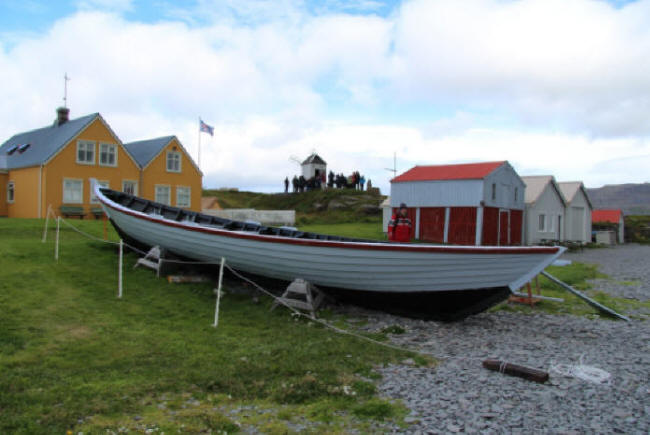
|
On the southern shore is a wooden boat called
Breiður,
the oldest operational boat in Iceland. It is an
8-oar rowing boat used now for fishing and ferrying.
Thought to be 220 years old, there seem to be two
versions of its origins with one saying it was
constructed on the island from Siberian driftwood
and the other that it was pre-cut in Norway |
|
Most of the island is devoted to the protection of
birds and a mown pathway through the lush grass took
us on a 1km guided walk round the southern end,
finishing with tea and splendid cakes at the
restaurant, which also sells souvenirs and postcards
that can be posted at the smallest post office in
Iceland. There are around 10000 visitors a year who
arrive by boat from Ísafjörður, on the south shore
of the fjord, between June and late August, or on
cruise ships as we did.
On a prominent hillock in the south east corner is a
small, white-painted wooden post mill – the only
surviving windmill in Iceland. There had been a few
others built in the country, but watermills
dominated. Built about 1830-1840 and also owned by
the National Museum of Iceland since 1996, it was
used to grind corn meal until it ceased milling in
1917. It had to be turned into the wind by hand,
which was a reason given for its demise. There is
very little room inside which is mainly taken up by
a substantial post. It was not possible to peer
inside as your author was already well behind the
rest of the group on the bird spotting walk! A 2011
Reykjavik newspaper said that the museum planned to
restore the mill: maybe this was subsequently
carried out as the windmill does appear in very good
condition.
|
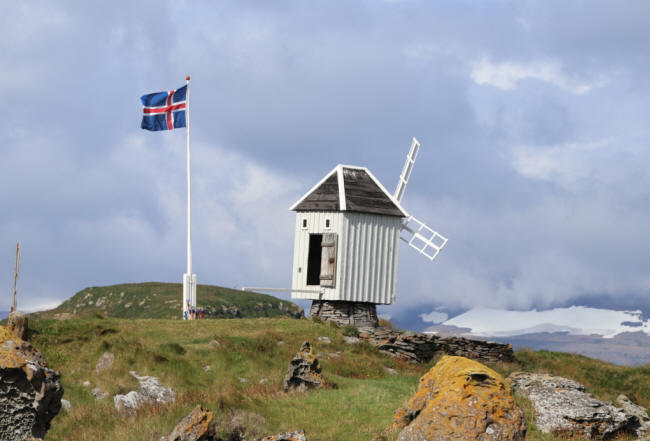 |
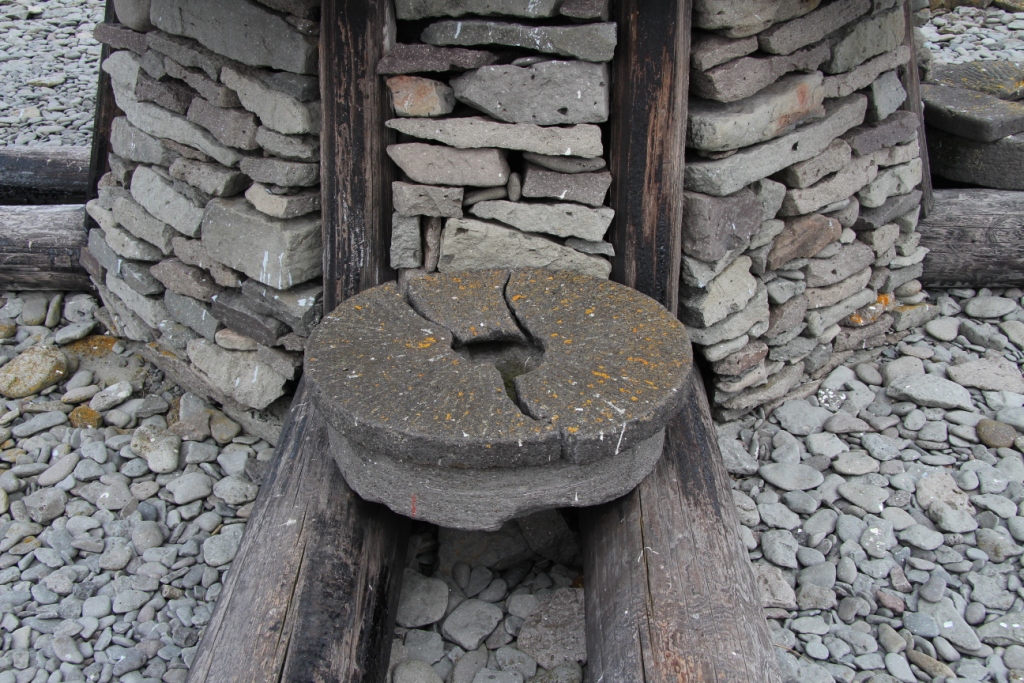
The wooden structure sits on a stone base, and a
cracked millstone is on display under the small
entrance door.
|
|
All this could be yours! Earlier in the year the
family put up the island for sale, although no price
was given but ‘open to offers’. It is speculated
that it could cost at least 300 million Icelandic
krona, which is somewhere in the region of
£2,200,000. Perfect for a bird lover, with a little
windmill to look after as a bonus. |
|
Editor
: This
picture and diagram come from Windmills and
Watermills in Iceland by A J Beenhakker (1976),
a very slim publication in the HMG library, which
clearly demonstrates how very few windmills and
watermills there actually were in Iceland, and how
little appears to be known about them. |
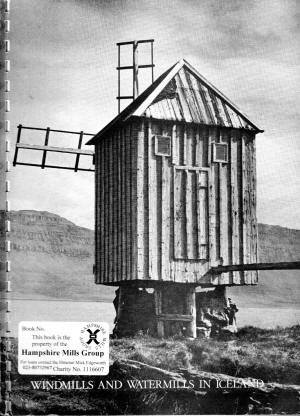 |
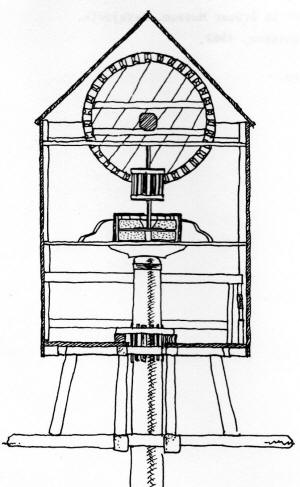 |
|
|
